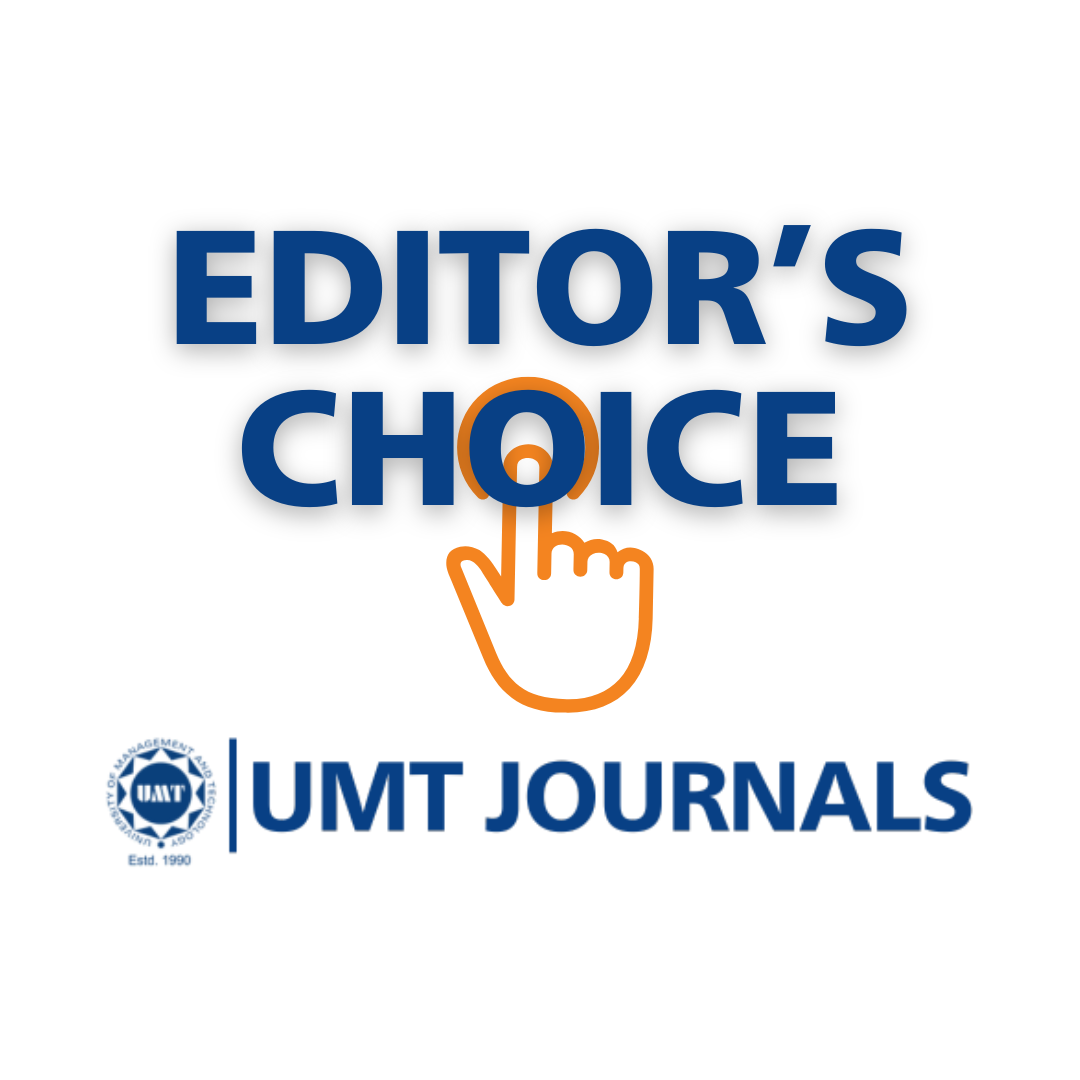Genotypic Prevalence of KELL1/KELL2 and KELL3/ KELL4 Blood Group Antigens in Individuals from Four Cities of Punjab, Pakistan
Abstract
 Abstract Views: 169
Abstract Views: 169
Kell blood group system (KBGS) plays a vital role in transfusion medicine and bears a multidimensional character. Kell antigens are very reactive and vital responses can be observed in case of mismatched blood. This research is aimed to check the frequency and prevalence of different antibodies (KELL1, KELL2, KELL3, and KELL4) of the KEL gene in the local population of four different cities of Punjab, Pakistan. To this end, two hundred volunteers (from different ethnic groups) were enrolled for blood sampling. A questionnaire was designed to collect the required demographic information covering gender, age, cast, blood group, and city of origin of all the participants. Genomic DNA was extracted using the phenol-chloroform method and DNA was quantified using a UV spectrophotometer. Screening for the two known variants (C578T, T193M) in exon 6 of KELL1/KELL2 and for another two variants (C841T, R281W) in exon 8 of KELL3/KELL4 was performed by using tetra arms PCR. Data was entered in the SPSS software. The frequency of contributing factors was calculated, followed by cross-tabulation and chi-square analysis. The results showed that the incidence of KELL2 was 90%, while KELL1 was observed only in 7.5% of samples and the heterozygous allele KELL1/KELL2 was reported in only 2.5% of the total samples, respectively. Similarly, the frequency of wild-type allele KELL3 was 2.5% and of mutant allele KELL4 it was 96%, while the frequency of heterozygous allele KELL3/KELL4 was 1.5%, respectively. Chi-square values of cast and the city of origin showed non-significant results for both variants, although the type of blood group was found to have a significant association with KELL3/KELL4 genotype. Our results are in line with the previously reported results of prior studies.
Downloads
References
Daniels G, Castilho L, Flegel WA, et al. International Society of Blood Transfusion Committee on terminology for red blood cell surface antigens: Macao report. Vox Sang. 2009;96(2):153-156. https://doi.org/10.1111/j.1423-0410.2008.01133.x
Shirey RS, King KE, Ness PM. Haemolytic transfusion reactions: acute and delayed. In: Silberstein LE, Ness PM, Anderson KC, Roback JD, eds. Blood banking and transfusion medicine: Basic principles and practice. 2nd ed. Churchill Livingstone; 2007:668–676.
Mafirakureva N, et al. Incidence and pattern of 12 years of reported transfusion adverse events in Zimbabwe: A retrospective analysis. Blood Transfus. 2014;12(3):362-367. https://doi.org/10.2450/2014.0156-13
Ahaded A, Brossard Y, Debbia M, Lambin P. Quantitative determination of anti‐K (KEL1) IgG and IgG subclasses in the serum of severely alloimmunized pregnant women by ELISA. Transfus. 2000;40(10):1239-1245. https://doi.org/10.1046/j.1537-2995.2000.40101239.x
Redman CM, Avellino G, Pfefferet SR, et al. Kell blood group antigens are part of a 93,000-dalton red cell membrane protein. J Bio Chem. 1986;261(20):9521-9525. https://doi.org/10.1016/S0021-9258(18)67688-4
Daniels GL, Anstee DJ, Cartron JP, et al. Terminology for red cell surface antigens. Vox Sang. 1999;77(1):52-57. https://doi.org/10.1046/j.1423-0410.1999.7710052.x
Daniels, G, Anstee DJ, Cartron JP, et al. Blood group terminology 1995: ISBT working party on terminology for red cell surface antigens. Vox Sang. 1995;69(3):265-279.
Lee S, Zambas E, Green ED, Redman C. Organization of the gene encoding the human Kell blood group protein. Blood. 1996;87(11):4922.
Reid M. The gene encoding the I blood group antigen: Review of an I for an eye. Immunohematology. 2004;20(4):249-52.
Thomas W, Bernhard R, Friedrich R, Christoph G, Gerhard L. Pancytopenia due to suppressed hematopoiesis in a case of fatal hemolytic disease of the newborn associated with anti-K supported by molecular K1 typing. J Pediatr Hematol Oncol. 2004;26(1):13-15.
Giblett ER. A critique of the theoretical hazard of inter vs. intra‐racial transfusion. Transfus. 1961;1(4):233-238. https://doi.org/10.1111/j.1537-2995.1961.tb00048.x
Duguid JKM, Bromilow IM, Entwistle GD, Wilkinson R. Haemolytic disease of the newborn due to anti-m. Vox Sang. 1995;68(3):195-196. https://doi.org/10.1111/j.1423-0410.1995.tb03927.x
Ye S, Dhillon S, Ke X, Collins AR, Day INM. An efficient procedure for genotyping single nucleotide polymorphisms. Nucleic Acids Res. 2001;29(17):e88. https://doi.org/10.1093/nar/29.17.e88
Chomczynski P, Sacchi N. The single-step method of RNA isolation by acid guanidinium thiocyanate-phenol-chloroform extraction: twenty-something years on. Nat Protoc. 2006;1(2):581-585. https://doi.org/10.1038/nprot.2006.83
Ashraf S. Kell blood group: A population-based study. Pak J Med Sci. 2001;17(4):211-214.
Arnoni CP, Muniz JG, de Paula TA, et al. An easy and efficient strategy for KEL genotyping in a multiethnic population. Rev Bras Hematol Hemoter. 2013;35(2):99-102. https://doi.org/10.5581/1516-8484.20130029
Elmissbah T. Distribution of Kell blood group system antigens Kpa, Kpb, and phenotypes in major populations of Sudan. J Blood Disord Transfus. 2013;4(3):140-42.
Elsayid M, Alfaifi AM, Almutairi AK, Almajed F, Al-Saqri F, Qureshi S. Phenotypic Profile of Kell blood group system among Saudi donors at King Abdulaziz Medical City-Riyadh. J Med Sci Clin Res. 2017;5(1):15654-15657. https://dx.doi.org/10.18535/jmscr/v5i1.75
Owaidah AY, Naffaa NM, Alumran A, Alzahrani F. Phenotype frequencies of major blood group systems (Rh, Kell, Kidd, Duffy, mns, p, Lewis, and Lutheran) among blood donors in the eastern region of Saudi Arabia. J Blood Med. 2020;11:59-65. https://dx.doi.org/10.2147/JBM.S236834

Copyright (c) 2022 Tasleem Kausar, Shumaila Noureen, Maham Malik, Saima Talib, Nabila Tariq

This work is licensed under a Creative Commons Attribution 4.0 International License.
BSR follows an open-access publishing policy and full text of all published articles is available free, immediately upon publication of an issue. The journal’s contents are published and distributed under the terms of the Creative Commons Attribution 4.0 International (CC-BY 4.0) license. Thus, the work submitted to the journal implies that it is original, unpublished work of the authors (neither published previously nor accepted/under consideration for publication elsewhere). On acceptance of a manuscript for publication, a corresponding author on the behalf of all co-authors of the manuscript will sign and submit a completed the Copyright and Author Consent Form.









